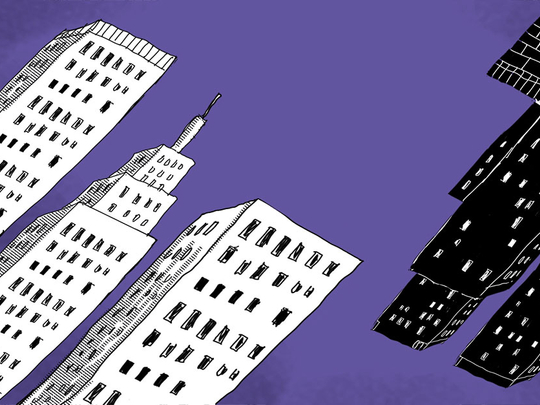
“Our nation is moving toward two societies, one black, one white — separate and unequal.” Thus did the Kerner Commission open its discussion of America’s racial problems in 1968. Fifty years later, we are still not one, to a large degree because the United States is a nation that lives apart.
The neighbourhoods where we spend our childhoods shape our life outcomes profoundly. As economist Raj Chetty and others have shown, black children are much less likely than white ones to live in the sorts of places that boost kids up the economic ladder. Until that changes, the divide won’t close.
During the Obama administration, the Department of Housing and Urban Development toughened its rules, making communities work harder to identify, and remove, barriers to integration. But under President Donald Trump, HUD has back-pedalled. On August 13, HUD announced a proposal to amend the Obama-era rules — and, critics say, to fatally weaken them.
Why is this happening? There are cynical answers involving Trump and veiled Republican racism. More charitably, one might point to the successive failures of federal policy to fundamentally alter America’s segregation patterns. In the end, for integration to work, individual citizens must be committed to the project.
Yet America’s cities often suggest novelist China Miville’s surrealist 2009 police procedural, The City and the City, about two adjacent cities somewhere in Eastern Europe. The novel’s twist is that the cities, Besel and Ul Qoma, exist not side by side but on the same spot. They are interlaced like the threads of a tapestry, woven together by some demented loom.
The existence of both cities can be maintained only by a continuous act of will by every citizen, who must “unsee” the people and the streets that don’t share their identity — must imagine a half-city and call it whole. “Breach” is both the forbidden act of crossing the lines and the shadowy agency that punishes those who transgress them. “Breach,” writes Miville, “is a void full of angry police.”
On one level, The City and the City is an ordinary cop novel where the inevitable path from initial crime to final justice simply happens to wander through an absurdist landscape; on another level, it is an all-too-realistic depiction of modern urban life.
My own ZIP code in Washington, would appear to be exactly the sort of integrated neighbourhood the Kerner Commission dreamed about. It is approximately half-white and half-black, with people in a broad range of incomes living next to each other. In theory, we are all served by the same businesses; in practice, bars and stores tend to draw their clientele from either white or black residents. There are plenty of both white and black children on the streets — but only the black kids seem to attend the local state schools. Proximity, it turns out, is less than half the battle.
In fiction, Breach may be policed by a quasi-governmental authority; in the real world, the cops are in our heads, shouting “Move along! Nothing to see here!” when we encounter a space that isn’t “ours.” The history of the past 50 years of urban policy is the history of policymakers trying to disband that psychological border patrol and to collapse disparate communities into one coherent place.
Political resistance
Largely, policymakers have failed. HUD’s Moving to Opportunity for Fair Housing programme in the 1990s helped some low-income residents relocate to higher-income areas, but it was an experiment that wouldn’t necessarily generate the same (modest) results when operated at scale. And it would encounter stiff political resistance. Aggressive countermeasures like the ones under debate also inevitably place a burden on local governments. They divert resources from other efforts to help disadvantaged neighbourhoods, such as simply building more housing, everywhere. According to HUD’s new proposal, the agency was deluged with complaints about Obama-era policy, especially from smaller public-housing authorities protesting that onerous compliance meant leaving other pressing needs unfilled.
There’s a reasonable argument that disbanding everyone’s internal border police is simply beyond the federal government’s powers, that it’s better to focus simply on putting roofs over heads, wherever those heads happen to be. But you could also argue that surrendering to our worst tendencies is of a piece with much other Trump administration policy — which is to say, entirely too deferential to border cops, real or metaphorical.
But whether you agree with the administration’s actions or not, it shouldn’t be hard to agree that whatever the government does will not be enough.
In Miville’s novel, the detective hero ultimately realises that the only way to solve the crime is to venture across the divide. Abandoning the half-world that he has spent so long imagining as whole is not entirely comfortable. But in fiction as in life: The only road to justice is a deliberate decision to step into the crosshatches and dwell in “the city and the city.”
— Washington Post
Megan McArdle is an opinion columnist and blogger who writes mostly about economics and finance.











